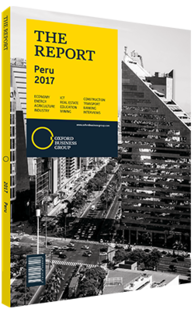Gonzalo Martin Ruiz Díaz, Former President, OSIPTEL: Interview

Interview: Gonzalo Martin Ruiz Díaz
How challenging is it for operators to increase average revenue per user (ARPU) while ensuring that their prices remain competitive?
GONZALO MARTIN RUIZ DIAZ: Peru continues to have gaps in terms of the country’s mobile network coverage. Although mobile service penetration is currently higher than 110%, the reality is that real access is at around 60% to 70%. As that gap is bridged, the price of services will drop. If companies need to increase their ARPU, that growth should come if operators can offer a wider variety of services or provide services related to – but not limited to – telecommunication services.
Regardless, the amount each customer spends is expected to increase in non-mobile services in 2016 and 2017 due to strong competition between operators. Generally speaking, margins and prices are likely to continue to decline, and differentiation will continue to determine growth within the sector.
To what extent would the development of more local content help spur data consumption?
RUIZ: The challenge to developing local content and local data traffic is not exclusive to Peru; it is, in fact, a challenge currently faced by the region as a whole. Data traffic levels are low in the majority of South America compared to North America or Europe, which makes it more expensive to develop local content. The more traffic there is, the more competitive and enticing it is to create local content.
The current telecommunications environment hinders the development of education, health and public services content targeted at rural areas. One of the main challenges of the national fibre-optic backbone is to connect all public entities throughout the country, thereby allowing them to provide online public services. In doing so, the generation of more local content will be required and enhanced. This will be in addition to the creation of two more network access points to add to the existing one. Once this network is laid out, Peru will be able to connect to other networks from neighbouring countries, which will increase traffic in the region and, ultimately, lead to the interchange of more local content.
What steps are being taken to increase coverage and connectivity in non-urban areas?
RUIZ: Peru has been applying a system of differentiated interconnection charges, which has helped boost traffic towards rural areas. These efforts have clearly enhanced coverage for both landline and mobile services in those areas. It is necessary to update the system, periodically, in order to increase and improve the level of coverage.
With respect to rural connectivity, 2016 will mark the completion of the country’s national fibre-optic backbone. Furthermore, some of the regional backbones will also be completed. These are historical landmarks, as they will allow fixed and mobile broadband to reach rural areas.
Moreover, once the 700-MHz spectrum is allocated, rural areas will also have access to high-speed internet. All these developments are key for Peru, given its complex geography.
How will requiring operators to request biometric identification prior to registering new mobile lines impact the sector, beginning in 2017?
RUIZ: This is a measure adopted by the Ministry of Transport and Communications, as part of a series of decisions to increase the level of security in mobile service acquisition processes and to decrease the number of identity thefts. It is important to remember that security is a right that every user is entitled to. Therefore, the introduction of this measure in 2017 will help guarantee that the security and rights of customers are preserved. In other words, users are the main beneficiaries of the implementation of biometric identification.
You have reached the limit of premium articles you can view for free.
Choose from the options below to purchase print or digital editions of our Reports. You can also purchase a website subscription giving you unlimited access to all of our Reports online for 12 months.
If you have already purchased this Report or have a website subscription, please login to continue.

